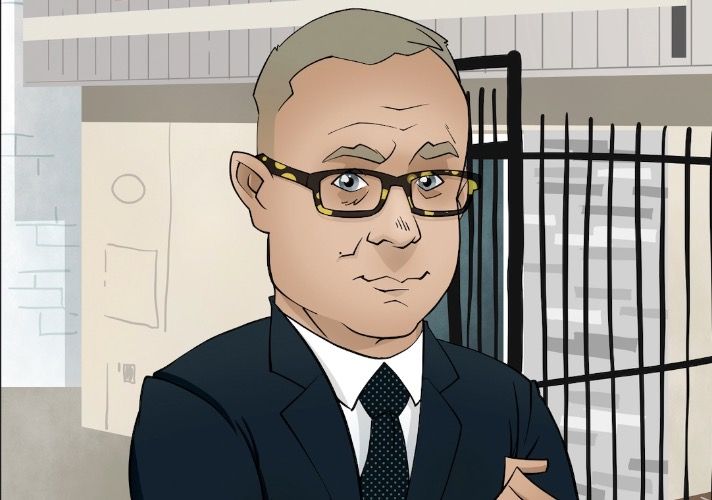
Does Spinal Cord Injury Shorten Your Lifespan?

Does Spinal Cord Injury Shorten Your Lifespan?

Yes! Patients suffering from spinal cord injuries have a lot more to worry about than just paralysis, as recent studies confirm that spinal cord injury increases the risks of cardiovascular diseases. Delaying immediate medical treatment for spinal cord injury worsens the injuries, leading to patient complications. So follow the guidelines and get to the hospital immediately. Leading causes of death among persons with spinal cord issues are the main part of our personal injury law practice.
The top-rated spinal cord injury lawyers at Ehline Law are world-famous for helping clients receive maximum financial compensation. Our top team helps victims of motor vehicle accidents and other mishaps received maximum compensation from all liable parties responsible for causing back injuries or fatalities to you, or a close loved one.
Below, our talented, compassionate team covers whether or not a back injury can shorten your life span and what types of compensation you can recover from the negligent parties based on significant increases in standard mortality ratios. Once we examine your personal data, we’ll be able to form an attorney-client relationship and help you get back on your feet emotionally and financially. We offer a free consultation to all new clients in furtherance of this helping, fruitful kinship spanning the rest of your life.
Can You Live a Full Life Span with a Spinal Cord Injury?
It depends. You’d likely have a longer life expectancy according to the non-injury life table. Past statistics show that based upon the severity of the spinal cord injury arch, the median survival ranged around 2.8 to 43 aggregate years after suffering a Traumatic Spine Injury (TSI.). Studies comparing survival using cumulative survival probability also show that biological females have a higher survival rate than males with an SCI.
Almost always, for men, the mortality risk increased as well as the risk for heart disease. If you received a traumatic spinal cord injury due to someone else’s fault, contact Ehline Law and our spinal cord injury attorneys today for a free case evaluation. Long-term survival, health statistics, and causes of death for all age groups will be factored in as our top spinal cord injury/paraplegia lawyer documents health status and financial damages for better clinical outcomes.
Spinal Cord Injuries and How to Estimate Life Expectancy
Like terminal cancer, statistics about people with SCI in the United States are rather grim. Approximately 80% of spinal injuries occur in men between the ages of 15 and 35, with the majority becoming tetraplegic (complete or partial paralysis in the arms, legs, and torso). The first year following the injury is critical for injured patients, especially those suffering from severe injuries. Although science and spinal cord medicine advancements have made it easier for spinal cord patients to live a somewhat everyday life, they haven’t improved patient lifespan over the last 30 years. No matter the year survival rate, or study duration, the injured spinal cord victims play a significant role in the overall survival data set for each period and primary outcome.
It is common to develop complications following spinal cord injury, such as pneumonia and other problems arising from high blood pressure. The more severe the weight and nature of the disability are, the higher the degree of cardiovascular dysfunction. More than 47% of middle age patients suffer from deep vein thrombosis, where a blood clot develops in a deep vein, causing pain and swelling incident cases and even ischemic heart disease. Again, women are the group with the best chances to beat their trauma.
Factors Affecting Estimated Life Expectancies in Patients
There are a lot of factors that impact attained age and how long a person might live following an injury like this in the general population. Initially, renal failure was the leading cause of death in patients with spinal cord injuries. However, according to health sciences, cardiovascular disease is today the leading cause of death in back injury patients.
The three main factors that affect the life span in traumatic brain injury and back fracture patients are:
- The severity of the injury: Less severe injuries can see recoveries. Still, complete spinal injuries are higher risk and can negatively affect how long a victim might live. These injuries can lead to cardiovascular complications like depression, preventing a full recovery.
- Location of the injury: Depending on where you get the injury on the spine, it can affect sensory, motor, and other important functions. These can make life extremely difficult, causing further health decline, urinary tract infections, and poor mental state.
- Age: Several studies show age can contribute a huge role in hospital mortality assessment, the healing process, and how the patient reacts to the injury. This is one major risk factor that affects how long someone might live. A 60-year-old patient is at a higher mortality risk than a 20-year-old patient since the older you get, the weaker your bones become. An injury can cause more damage to older spinal cord-injured adults than younger, active ones undergoing rehabilitation. Elder face urinary system problems, bacterial diseases, and reduced life expectancy after spinal cord-related pressure sores, increasing lesion severity, or pulmonary embolism observed deaths.
There are other factors besides respiratory complications in-hospital deaths, such as gender and economic risk factors. According to the American Spinal Injury Association, back injury treatment can cost patients up to $1 million in the first year and approximately $5 million throughout the patient’s lifetime epidemiology outcome variables.
Treatment and support for spinal injuries are costly, and those without financial resources often struggle the most in coping, adding to the higher mortality rate and uncertainty. Individuals without the calculated financial means to treat their spinal injuries can become suicidal from the constant pain, societal neglect, and drug and alcohol use differences that often come with these types of injuries.
Life Span in Back Injury Patients: Results of a 50-year Study
A study took place where researchers used data from patients with spinal cord injuries (SCI) admitted to the spinal unit to estimate life expectancy and identify survival patterns. The data spanned 50 years from 1955 to 2006. Using the ratio of observed patient deaths to expected deaths, the study outcomes estimate and calculate a standardized mortality ratio. Of more than 2,000 sampled SCI population, 8% of the tetraplegic and 4% of the paraplegic patients died within the first year of receiving spinal injuries. This was common in patients with complete C1-4 tetraplegia and surgery.
Survival Rates in the Long Run
The same study showed the survival rates of spinal cord-injured patients in the long run according to age. Tetraplegic patients with an average age of 40 have a 47% chance of surviving the injury. The study draws up different survival curves to show how life expectancy declines as the years pass following the injury. Researchers also used data from many other analyses involving traumatic SCI patients and mortality rates according to neurological impairments. All the studies came to one conclusion: the degree of neurological impairment directly impacts life expectancy. The survival-related findings strongly determine the degree of neurological impairment in an SCI patient.
Has Survivability Increased in SCI Patients?
Over the years, there has been an improvement in the estimated life expectancy of an SCI patient via technological devices, improved surgical methods, and modern medicine. It has even helped patients cope with chronic pain from spinal injuries. Over the last ten years, the increase in life expectancy has been evident in paraplegic patients. However, on average, there is an increase in the mortality rate among SCI patients, especially those with severe impairment. There is a need for a greater understanding of the mortality rate in SCI patients and the reduced life expectancy.
The studies do not consider contextual factors such as personal and environmental and how they interact with the existing evidence variables like age, impairment, and more. Future research should lazer in on identifying contextual factors, including personal or environmental, that lower the life spans of individuals afflicted by an SCI.
How Can A Spinal Cord Injury SCI Lawyer Help With a Free Consultation?
Life expectancy for first-year survivors with tetraplegia compared to other back injuries is reduced. A nontraumatic SCI ranged less deadly for most based on recent trends during the above study period. If you received injuries from an accident that was not your fault, contact us at (213) 596-9642 for a free consultation with our injury attorneys. Claims for spine injuries are often challenging. A qualified attorney can help you expedite the claims process and recover the compensation you deserve for the increased risk based on deaths confirmed even with an incomplete SCI. Spinal cord injuries are career and life-altering injuries that cost patients millions of dollars over the course of their lives.
You shouldn’t be paying for medical expenses, transportation costs, therapy, access, and objectives for an accident that was not your fault. For more information on how we can help, contact us now or visit any law offices across California.
Citations:
- D, DeVivo M, Shavelle R, Brooks J, Paculdo D. Economic factor and longevity in spinal cord injury: a reappraisal. Arch Phys Med Rehabil 2008;89:572-574. 12. Krause JS, Saunders LL, DeVivo MJ.
Categories
- A to Z Personal Injury Podcast
- Car Accident
- Government Tort Blog
- Insurance Law Blog
- Piloting and Aviation Accident Blog
- Premises Liability Blog
- Products Defect Blog
- Recreation-Sports Accident Blog
- Reports
- Service Related Cancer Blog
- Sexual Assault Blog
- Spinal Cord Injury Blog
- Torts, Examples, Explanations
- Train Accidents Blog
- TV, Media & Firm News
- Uncategorized
Firm Archive
Main Los Angeles Location


Michael Ehline
Michael Ehline is an inactive U.S. Marine and world-famous legal historian. Michael helped draft the Cruise Ship Safety Act and has won some of U.S. history’s largest motorcycle accident settlements. Together with his legal team, Michael and the Ehline Law Firm collect damages on behalf of clients. We pride ourselves on being available to answer your most pressing and difficult questions 24/7. We are proud sponsors of the Paul Ehline Memorial Motorcycle Ride and a Service Disabled Veteran Operated Business. (SDVOB.) We are ready to fight.
